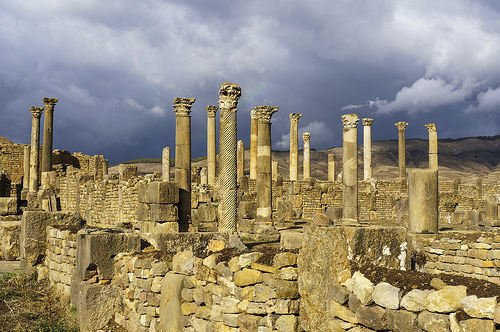Learn about some very well preserved Roman architecture with these Cuicul facts.
- Cuicul is an ancient city and ruins built by Romans in a mountainous area, located in north Africa’s Algeria.
- ‘Cuicul’ is the Latin name for the city, which is also known as ‘Djémila’, that can literally be translated to ‘beautiful’ in Arabic.
- Cuicul was declared a UNESCO World Heritage Site in 1982 due to the site’s historically significant Roman architecture.
- The Cuicul group of ruins consists of temples, houses, arches, streets, and also a theatre, that were originally built and designed by Romans.
- Cuicul was built around 96 to 98 AD, and further developments and building occurred in the 3rd century, although, by the end of the 6th century it lay abandoned.
Part of Cuicul
Image courtesy of Dan Sloan/Flickr
- Cuicul was built on a mountain in the northern part of the country, in the Sétif Province, 900 metres (2953 feet) above sea level.
- Until the 500s, marking the Roman Empire’s fall, Cuicul was used both as a Roman soldier base and a trade centre for the area.
- The Christian religion was introduced to Cuicul during the 300s, so a chapel, baptistry and houses from the time are able to be seen today.
- Cuicul is susceptible to damage by natural disasters including earthquakes; raids by humans; and nearby land illegally being used for agricultural purposes.
- Cuicul is visited annually by approximately 45,000 tourists and students, that seem to have little or no detrimental effect on the area.
Bibliography:
Cuicul (Djémila), 2014, Wikipedia, http://en.wikipedia.org/wiki/Cuicul_(Dj%C3%A9mila)
Djémila, 2014, UNESCO World Heritage Convention, http://whc.unesco.org/en/list/191






